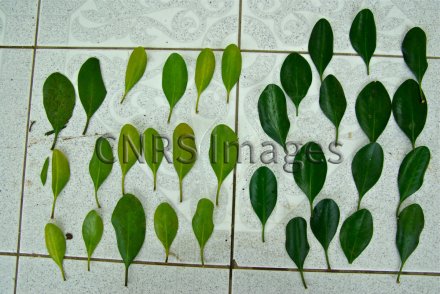Production year
2008

© François FROMARD/CNRS Images
20120001_0353
Feuilles de palétuvier, "Ceriops tagal", collectées en parcelle témoin (gauche) et parcelle impactée (droite), sur le site pilote de Malamani, baie de Chirongui, Mayotte. Les scientifiques ont installé un système de collecte des eaux usées domestiques dans un lotissement. Après un traitement de décantation qui élimine une partie de la pollution, l'eau est rejetée à marée basse sur des parcelles de mangrove. L'azote polluant les eaux usées est absorbé par la végétation et favorise sa croissance tel un engrais. Sous l'effet de l'absorption des eaux usées, la taille des feuilles augmente, leur teneur en pigments est significativement plus importante (chlorophylles a et b, carotènes, xantophylles), l'efficacité photosynthétique (mesures des échanges gazeux) est accrue.
The use of media visible on the CNRS Images Platform can be granted on request. Any reproduction or representation is forbidden without prior authorization from CNRS Images (except for resources under Creative Commons license).
No modification of an image may be made without the prior consent of CNRS Images.
No use of an image for advertising purposes or distribution to a third party may be made without the prior agreement of CNRS Images.
For more information, please consult our general conditions
2008
Our work is guided by the way scientists question the world around them and we translate their research into images to help people to understand the world better and to awaken their curiosity and wonderment.